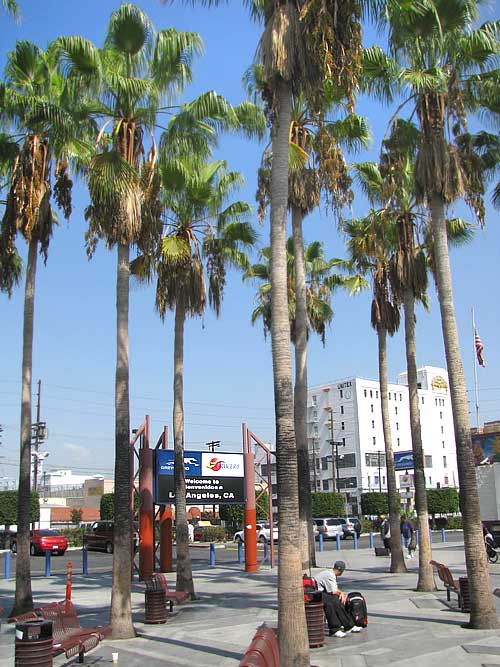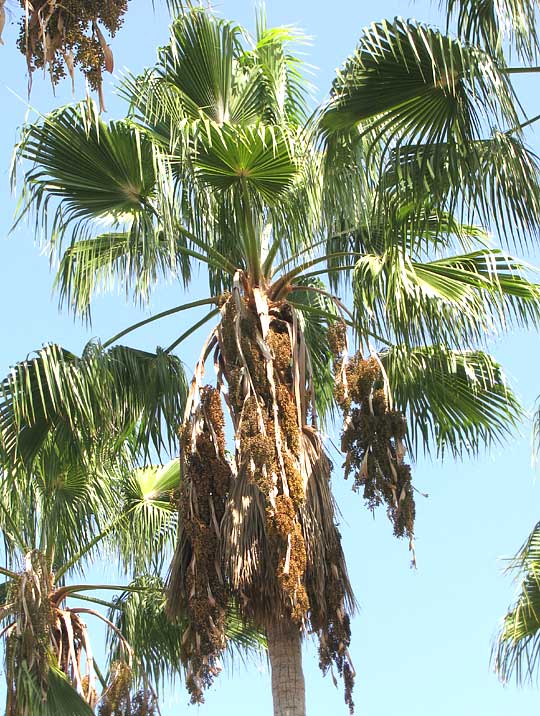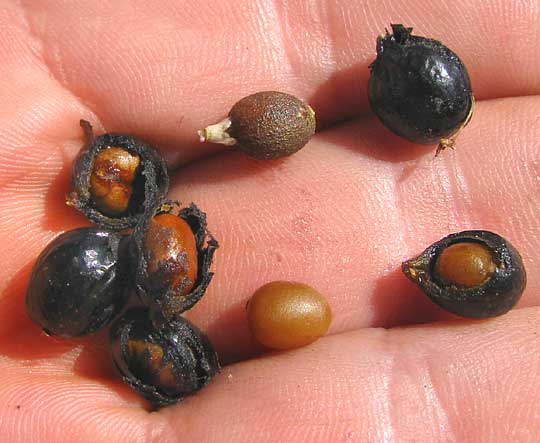Excerpts from Jim Conrad's
Naturalist Newsletter
from the October 11, 2009 Newsletter, an On-the-Road Edition:
WASHINGTONIA FAN PALMS
Around noon we pulled into the Greyhound Station in Los Angeles, where I had five hours to kill before the connecting bus. I'd looked forward to that rest, though, not only because I needed to resettle my body after that first night on the bus, but also I knew that an afternoon in the sunny, windy little park next to the station always is a pleasant experience. You can see the majestic palms bestowing shade there below:

Those are fan palms of the genus WASHINGTONIA. Two Washingtonia species are abundantly planted throughout the US Southwest -- the native California Fan Palm, Washingtonia filifera, and the Mexican Fan Palm, W. robusta. They're very similar and often hybridize. The ones in the picture appear to me to have features of both species so maybe they're hybrids. If you want to try your hand at differentiating them, a page with a chart comparing the two species is available at http://www.floridata.com/ref/w/wash_fil.cfm.
Washingtonias are recognized mostly by their fan-shaped fronds with no midrib and the "shag" of old, dried-up leaves dangling below the crown, covering the top part of the slender trunk.
Each palm in the park was heavily laden with thousands of fruits dangling in long, compound clusters, as seen below:

Palm fruits often look like miniature coconuts, which of course are palm fruits themselves, but not these. Instead of being surrounded by a dry, hard, fibrous husk, like Coconut Palm "seeds," Washingtonia seeds are encased in the fleshy, bird-pleasing tissue shown below:

In that picture the fleshy covering has been removed or partially removed from the very hard, brown seeds.
Washingtonia fruits technically are drupes, which means that a fleshy covering surrounds a single, hard- shelled seed, and the fruit does not split open when mature.